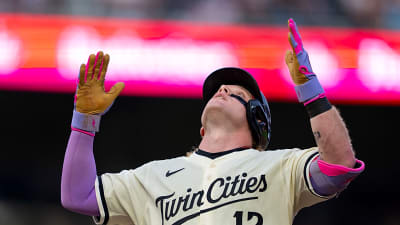
The NBA didn’t start as the flashy global brand we see now.
It began small— tough neighborhood courts, tight communities, and players grinding more for love than money. In the 1940s and 50s, basketball barely registered on the national radar. Baseball was king, and the NBA was still figuring itself out. But the energy was there: high-speed play, buzzer-beaters, and a gritty culture ready to grow.
In the 1970s and 80s, things flipped. Magic Johnson and Larry Bird brought the drama. Then came Michael Jordan— he changed everything. More than a player, he was a global icon. With him, the NBA crossed borders and transformed into a star-powered, strategy-fueled juggernaut.
From Local Love to International Obsession
One reason the NBA blew up internationally? Accessibility. YouTube clips, highlight reels, and social media made stars like LeBron James, Steph Curry, and Giannis Antetokounmpo household names from Milwaukee to Manila. That instant access also fueled interest in stats, trades, and NBA odds, turning passive viewers into active followers.
But digital isn’t the only thing that sparked the boom.
Over the years, the league made a conscious push to become more global:
- International players were embraced, not sidelined. Think Dirk Nowitzki, Tony Parker, Luka Doncic.
- NBA Global Games brought real matches to fans in Europe, Asia, and the Middle East.
- Localized content and media deals helped fans follow teams in their own languages and time zones.
The result? A massive spike in viewership, merchandise sales, and youth programs worldwide. The league has woven itself into the cultural fabric of dozens of countries.
The NBA recently surpassed more than 75 million followers on Instagram, and 70% of those followers are located outside of the United States.
For context, the NBA has nearly 2x more followers than the NFL, MLB, NHL, and MLS…combined.
It's a global game
(h/t @basketbllnews) pic.twitter.com/wjvXyCQFA2
— Joe Pompliano (@JoePompliano) January 30, 2023
How the Game Has Changed On and Off the Court
Back in the day, centers ruled the paint and mid-range jumpers were gold. Today? It’s all about pace and space. Teams chase threes and fast breaks. Defense? Still vital, but it looks different now— switch-heavy schemes, occasional zone coverage, and players who can guard one through five.
Let’s break down some key shifts that reshaped the NBA:
- Style of play
- More three-pointers, fewer post-ups
- Bigs who shoot like guards
- Positionless basketball that blurs traditional roles
- Player movement
- Stars switching teams in free agency
- Superteams becoming the norm
- Front offices balancing talent, cap space, and locker room chemistry
- Technology and training
- Load management for longevity
- Real-time data shaping in-game decisions
- VR, AI, and biometric tracking are used in player development
These changes aren’t just surface-level. They affect everything from scouting to contracts to team dynamics. Even though we predict game outcomes, it ties into this evolution. If you’re tracking NBA odds, knowing how the game’s evolved can help you understand team strengths and momentum.
What’s Next for the NBA?
Expansion rumors. Global franchises. AI coaching tools. It’s clear: the NBA isn’t slowing down. What began as a niche American league is now a worldwide juggernaut. It’s more than basketball. It’s entertainment, business, and culture all rolled into one.
Teams looking to join the NBA's European expansion league will have to commit to at least a half a billion in franchise fees, according to SBJ sources.
What's the latest timeline and what teams are in the conversation?
Here's @tomfriendwriter
https://t.co/lO1qmOmGBz pic.twitter.com/RnF4QJ7wFZ
— Sports Business Journal (@SBJ) July 31, 2025
And despite all the glitz, the heart of the game stays the same. The grind, the drama, the stories — from playgrounds to packed arenas, the soul of hoops is still there. Stronger than ever.
More must-reads:
- Troubling update emerges about Joel Embiid’s health
- Cavaliers' Darius Garland feels 'great' following toe surgery
- The 'NBA Summer League MVPs' quiz
Breaking News
Trending News
Customize Your Newsletter
 +
+
Get the latest news and rumors, customized to your favorite sports and teams. Emailed daily. Always free!









